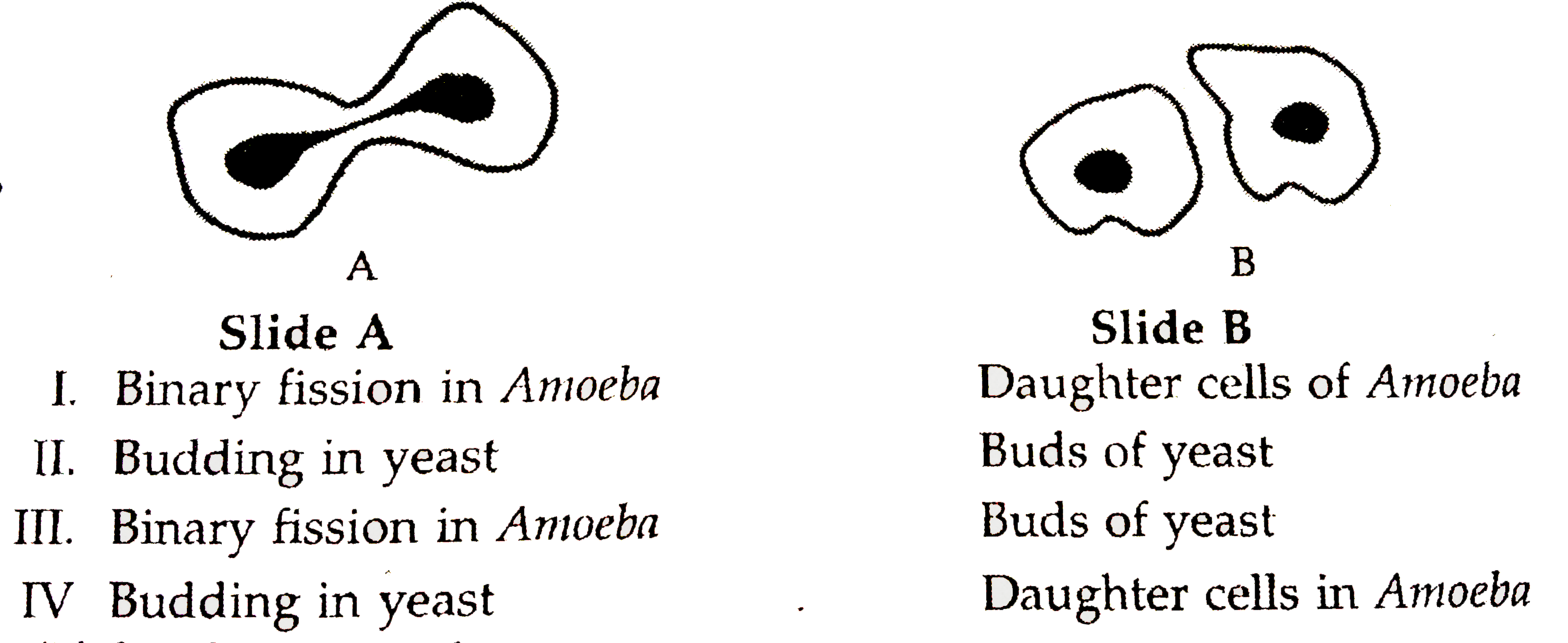BUDDING(BUDS)
Step-by-Step Text Solution for Budding:
1. Definition of Budding: Budding is a form of asexual reproduction where a new organism develops from an outgrowth or bud on the parent organism.
2. Types of Reproduction: There are two main types of reproduction in organisms:
- Sexual Reproduction: Involves the fusion of male and female gametes, requiring two parents.
- Asexual Reproduction: Involves only one parent, allowing the organism to reproduce without the need for gametes.
3. Budding as Asexual Reproduction: Budding is classified under asexual reproduction since it involves only one parent organism producing offspring.
4. Examples of Organisms that Bud: Common examples of organisms that reproduce through budding include:
- Hydra: A small freshwater organism.
- Yeast: A type of fungus used in baking and brewing.
5. Process of Budding:
- A small outgrowth, known as a bud, begins to form on the parent organism.
- This bud grows and matures while still attached to the parent.
- Eventually, the bud separates from the parent and becomes an independent individual.
6. Visual Representation: To understand budding better, one can visualize the process:
- Imagine a parent Hydra with a small bud emerging from its body.
- As the bud grows, it remains attached until it is fully developed.
- Once mature, the bud detaches and becomes a new Hydra.
7. Conclusion: Budding is an efficient way for certain organisms to reproduce, allowing them to create new individuals without the need for a mate.
---
- Sexual Reproduction: Involves the fusion of male and female gametes, requiring two parents.
- Asexual Reproduction: Involves only one parent, allowing the organism to reproduce without the need for gametes.
- Hydra: A small freshwater organism.
- Yeast: A type of fungus used in baking and brewing.
- A small outgrowth, known as a bud, begins to form on the parent organism.
- This bud grows and matures while still attached to the parent.
- Eventually, the bud separates from the parent and becomes an independent individual.
- Imagine a parent Hydra with a small bud emerging from its body.
- As the bud grows, it remains attached until it is fully developed.
- Once mature, the bud detaches and becomes a new Hydra.
Similar Questions
Match column I with column II and select the correct option from the given codes.
Column IColumn II(A) Vegetative bonds(i) buds develop in axils of leaves(B) Floral buds(ii) Buds produce leafy shoots(C) Axillary buds(iii) Reproductive buds that produce flowers(D) Accessory buds(iv) Additonal buds borne at leaf basesView SolutionAsexual Reproduction|Types Of Asexual Reproduction (Fission)|Multiple Fission|Sporulation|Endogenous Buds|Budding (Exogenous Buds)|Fragmentation
View Solution
Knowledge Check
- Question 1 - Select One
In given statements A-D
A) Leaves of Pisum bears buds in their axil
B) Buds are never found at the tip of lateral branches
C) Leaves are formed from the apical bud
D) Floral buds are always terminal in positionAB and C are correctBA and D are incorrectCB and D are correctDB and D are incorrect - Question 2 - Select One
Statements: All petals are flowers. Some flowers are buds.
Some buds are leaves. All leaves are plants
Conclusions: I Some petals are not buds
II. Some flowers are plants
III. No flowers is plantAOnly I followsBEither II or III followsCI and II followsDOnly III follows - Question 3 - Select One
The given slides A and B were identified by four students, I, II, III and IV as stated below:

Slide ASlide BI.Binary fission in AmoebaDaughter cells of AmoebaII.Budding in yeastBuds of yeastIII.Binary fission in AmoebaBuds of yeastIV.Budding in yeastDaughter cells in Amoeba
Of the above mentioned identifications of slide A and B, which one is correct?AIBIICIIIDIV
Asexual Reproduction|Types Of Asexual Reproduction (Fission)|Multiple Fission|Sporulation|Budding (Exogenous Buds)|Endogenous Buds|Fragmentation
View SolutionThe given slides A and B were identified by four students I, II, III and IV as stated below :

Slide ASlide BI.Binary fission in AmoebaDaughter cells of AmoebaII.Budding in YeastBuds of YeastIII.Binary fission in AmoebaBuds of YeastIV.Budding in YeastDaughter cells in Amoeba
Of the above mentioned identifications of alides A and B , which one is correct?View SolutionSeed bud is
View SolutionFrom the given categories of bud choose the one which is present on potato tuber ?
Nodal bud,Adventitious,Axillary bud,Leaf bud,Extra-axillary budView Solution$ Those lateral buds which are near the apical bud are called dormant buds.
! Dormancy of lateral buds is due to Apical dominanceView Solution

